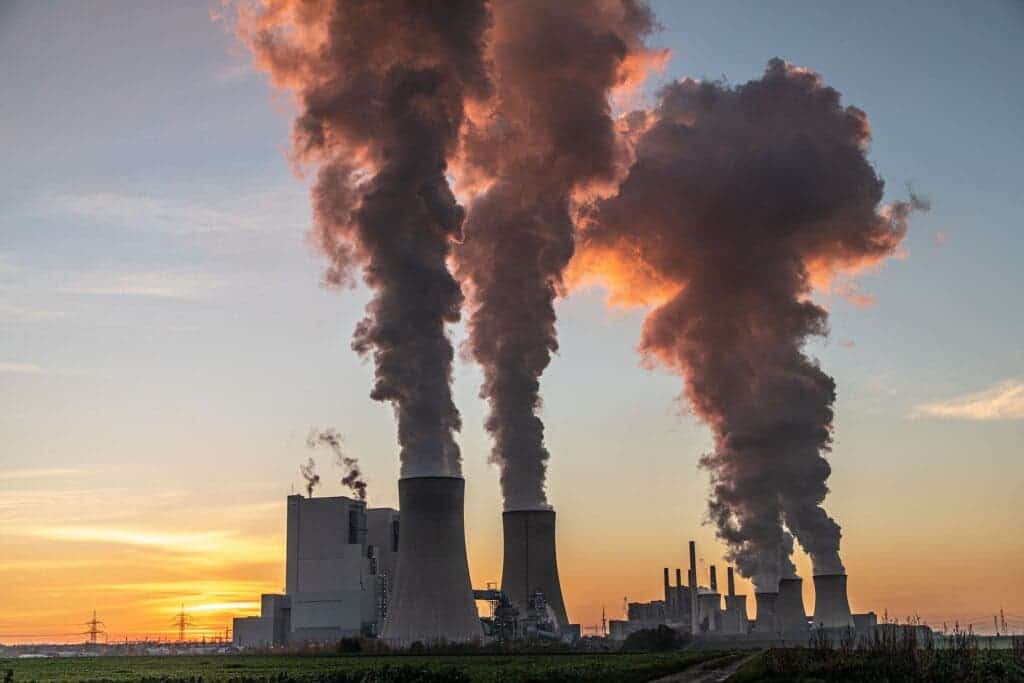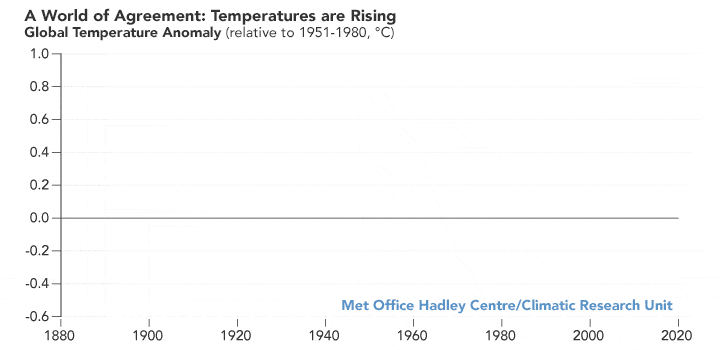
Carbon dioxide levels in the atmosphere have crossed an ignoble and concerning milestone. By burning enormous amounts of fossil fuels, human activity has now pushed the concentration of CO2 in the atmosphere by more than 50%, compared to pre-industrial levels recorded at the end of the 19th-century.
According to the National Oceanic and Atmospheric Administration, carbon dioxide levels averaged 421 parts per million (ppm) for the month of May at its monitoring station at Mauna Loa, Hawaii. During the 19th-century, carbon dioxide levels averaged only 280 ppm.
The last time carbon dioxide levels were this high was during the Pliocene era, about 4-4.5 million years ago. During that period, temperatures were about 3.9 degrees Celsius (7 degrees Fahrenheit) hotter and sea levels were 5 to 25 meters (16 to 82 feet) higher than today. Many coastal regions like South Florida or Manhattan were completely underwater.
The Pliocene era conditions may foretell a similar future in the next century, or even just decades from now. Back then, the seas and atmosphere were a lot hotter than they are now, despite the same CO2 levels, because greenhouse gases were gradually ramped up over the course of hundreds of thousands of years. By contrast, human activity has increased CO2 levels at an unprecedented rate in geological history within just 150 years.
All of this CO2 in the atmosphere is already locked in since the greenhouse gas can remain stable in the atmosphere, where it retains heat, for up to centuries. So even if by waving a magic wand we’d entirely cease to burn fossil fuels tomorrow, the CO2 levels we’re seeing today wouldn’t begin to drop for decades at least. Technologies that suck up carbon from the air, while useful, are too expensive to deploy at a global scale that is meaningful enough to put a dent in climate change.

Carbon dioxide levels registered during the month of May are usually the peak of the year. That’s because a lot of carbon is being soaked up by the oceans, but also by plants from the northern hemisphere that grow their foliage during the summer.
While carbon levels climb and drop in a zig-zag pattern, depending on the time of the year and atmospheric conditions like El Niño, the overall trend has always been one of carbon dioxide accumulation ever since the Industrial Age. This year’s carbon dioxide levels, for instance, are 1.9 ppm higher than in May 2021.
“The world is trying to reduce emissions, and you just don’t see it. In other words, if you’re measuring the atmosphere, you’re not seeing anything happening right now in terms of change,” said NOAA climate scientist Pieter Tans.
“Humanity has to make more serious efforts and see a rapid decrease in greenhouse gas emissions, or else the impacts of climate change will only continue to worsen,” said Jonathan Overpeck, the dean of the School for Environment and Sustainability at the University of Michigan.
According to the IEA, the COVID-19 pandemic triggered the largest annual drop in global energy-related carbon dioxide emissions since the Second World War, marking a 6% decline compared to 2019 levels. However, by the end of December 2020, greenhouse gas emissions rebounded.
Of course, some rebound was to be expected given the fact that many businesses were shuttered and consumer demand dropped due to stay-at-home orders, which have now been lifted in the vast majority of the world. But what is disappointing was the intensity and rapidity of the rebound, signaling a wasted opportunity to take more meaningful action to decarbonize the global economy. We now spew about 36 billion tonnes of carbon into the air each year.
The world is already warmer, on average, by slightly more than one degree Celsius, with some regions experiencing up to twice this figure.

In order to stave off more than 1.5 degrees Celsius of warming — a threshold below which the most catastrophic effects of climate change can be averted — scientists estimate CO2 emissions must reach net zero by 2050 at the latest. So far, global efforts fall woefully short of meeting this target. To put things into perspective, climate scientists estimate the world would have to cut its CO2 emissions by about the same amount as we had during the COVID crisis every year until 2050.


